The Redwood
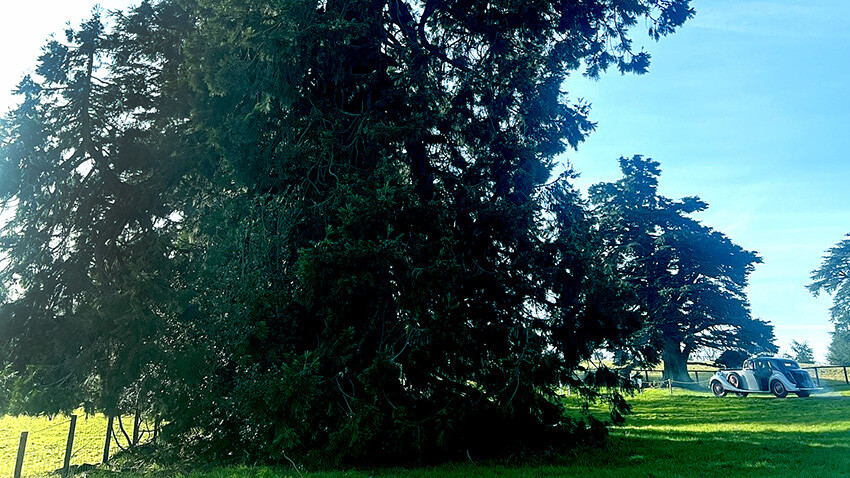
The Redwood
 The cedars were brought back from the Middle East in the 18th century, trees of myth and stature yet those who planted them never saw them – just dreamt of them as their gift to the future. Look to your other side however and there is a Redwood Tree.
A century later, another Englishman, William Lobb, was travelling in the USA. He worked for the famed nursery James Veitch & Sons which was the largest family-owned plant nursery business in Europe in the 19th century. Lobb had heard stories of towering trees in California’s Sierra Nevada range and was determined to see them for himself.
The cedars were brought back from the Middle East in the 18th century, trees of myth and stature yet those who planted them never saw them – just dreamt of them as their gift to the future. Look to your other side however and there is a Redwood Tree.
A century later, another Englishman, William Lobb, was travelling in the USA. He worked for the famed nursery James Veitch & Sons which was the largest family-owned plant nursery business in Europe in the 19th century. Lobb had heard stories of towering trees in California’s Sierra Nevada range and was determined to see them for himself. On exploring the area, he found ninety immense trees and reported back that one of the felled trees had once stood 300ft high with a girth of 29ft. They may not be the tallest but they are the heaviest and it is thought some may live to be 3000 years old. Lobb was certain that there was a potential market for such exceptional trees among Veitch’s clients in England and he thus collected seeds, specimens and two small living saplings and returned in haste to England.
On exploring the area, he found ninety immense trees and reported back that one of the felled trees had once stood 300ft high with a girth of 29ft. They may not be the tallest but they are the heaviest and it is thought some may live to be 3000 years old. Lobb was certain that there was a potential market for such exceptional trees among Veitch’s clients in England and he thus collected seeds, specimens and two small living saplings and returned in haste to England.
 Arriving back in December 1853, Lobb took his samples and sketches to John Lindley of the Horticultural Society who named the new introduction Wellingtonia gigantea to commemorate the lately deceased Duke of Wellington. This “giant amongst trees” was considered an appropriate memorial for such an important British historical figure.
The 4th Earl of Carnarvon enthusiastically planted this new species both in the parkland and to form part of an avenue which was to lead from the little cemetery chapel towards the church through rather wet ancient woodland.
Arriving back in December 1853, Lobb took his samples and sketches to John Lindley of the Horticultural Society who named the new introduction Wellingtonia gigantea to commemorate the lately deceased Duke of Wellington. This “giant amongst trees” was considered an appropriate memorial for such an important British historical figure.
The 4th Earl of Carnarvon enthusiastically planted this new species both in the parkland and to form part of an avenue which was to lead from the little cemetery chapel towards the church through rather wet ancient woodland.
 Meanwhile Dr Albert Kellogg, the founder of the California Academy of Sciences, had thought to name the tree the 'Washingtonia' in honour of America’s revered first President but had not yet completed a set of herbarium specimens to register the newly named species. He was too late for this particular tree but nevertheless he was a key figure in recognising and naming the diverse genus of his country. An accomplished illustrator of botanical specimens, he published "The Forest Trees of California" in 1882.
Meanwhile Dr Albert Kellogg, the founder of the California Academy of Sciences, had thought to name the tree the 'Washingtonia' in honour of America’s revered first President but had not yet completed a set of herbarium specimens to register the newly named species. He was too late for this particular tree but nevertheless he was a key figure in recognising and naming the diverse genus of his country. An accomplished illustrator of botanical specimens, he published "The Forest Trees of California" in 1882.
 In the spirit of botanical compromise, a Latin name was proposed instead: Sequoia gigantea. In 1847 a German botanist named Stephen Endlicher had named the coastal redwood trees Sequoia sempervirens in honour of Cherokee Chief Sequoya. In the 20th century, however, botanists concluded the coastal redwood and giant redwood were not one genus and a variation, Sequoiadendron giganteum, was chosen to link and differentiate the species.
In the spirit of botanical compromise, a Latin name was proposed instead: Sequoia gigantea. In 1847 a German botanist named Stephen Endlicher had named the coastal redwood trees Sequoia sempervirens in honour of Cherokee Chief Sequoya. In the 20th century, however, botanists concluded the coastal redwood and giant redwood were not one genus and a variation, Sequoiadendron giganteum, was chosen to link and differentiate the species.
 Geordie and I have also planted a new sequoia/ Wellingtonia / Washingtonia in the parkland not far from the one planted 150 years ago. We have done it in memory of and to support a USA charity called TAPS which helps bereaved serving families. Hopefully in another 200 years it too might begin to touch the sky.
In any case these extraordinary trees were part of the landscape long before human kind either lived, named or wrote about them.
Geordie and I have also planted a new sequoia/ Wellingtonia / Washingtonia in the parkland not far from the one planted 150 years ago. We have done it in memory of and to support a USA charity called TAPS which helps bereaved serving families. Hopefully in another 200 years it too might begin to touch the sky.
In any case these extraordinary trees were part of the landscape long before human kind either lived, named or wrote about them.
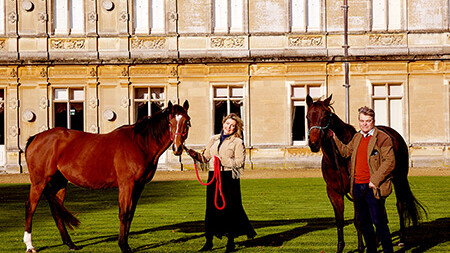
- Christmas
- Community
- Dogs & Horses
- Egypt & Tutankhamun
- Entertaining
- Farm
- Filming
- Gardens
- History & Heritage
- Daily Life
- Royalty
- Cooking
- Interiors
- Heroes
- Architecture
- Cars
- Conservation
- Downton Abbey
- Events
- Gardens & Landscape
- Highclere Castle Gin
- History
- Planes
- Restoration
- Stories & Books
- Uncategorized
- Visitors
- Wildlife
52 Comments
Lady Carnarvon,
Thank you for telling another story about a tie between Highclere Castle and America. Our countries’ friendship is very special, and we appreciate your telling us about its unusual links!
Martha G
Lady Carnarvon........you teach us with every blog. You have taught more to me about one of my countries greatest treasures than I ever knew. Thank you. How large is the one that planted by the 4th Earl?
Thank you Sue, I'm pleased you had a wonderful day.
Thank you Martha Glass, you said it all.
Jenny Modave
You give me new eyes! Driving past landscapes one almost takes for granted the trees, beautiful and majestic that they are, and knowing the history of a tree makes one look and think and wonder of all that they have seen, and look at each branch, and think, and appreciate, rather than drive on seeking new vistas.
Lovely the pictures of the redwood and you and lord Carnarvon and lam fan of Downton Abbey and lovely highcelere castle thank you for the email
I so enjoy your commentaries on Highclere castle and the grounds . I also miss your quirky coffee corner that you used to do in the morning. That was always fun! Looking forward to reconnecting once again. Thank you.
My husband and I visited the Sequoia National Park in 2019 and bought two saplings. We live in costal southern New Jersey. They are about 3’ tall so far. We will have the only redwoods in NJ. It’s exciting watching them year to year.
Another interesting historical Blog Lady Carnarvon especially with a USA connection! The Redwoods & Sequoias here in California were always fascinating to see and walk about years ago and even still today. Thank you again for another interesting Blog with lovely photos and details.
Remain well and good luck with your large trees there and recently planted ones.
Greetings Lady Carnarvon,
I liked your story about the Redwood trees and having lived in central California many years ago decided on a trip there to try my hand at growing one in North Carolina. I bought a 3 in diameter young tree and thought I could best take care of it in a huge planter. The thought being to transplant it after it got too large for being in a planter. I gave it potting soil and TLC. After it stayed wetter than I had hoped in the planter I swapped out most of the potting soil for fresh and continued to coax it to vigor. My efforts failed and I felt terrible having killed a thriving young tree. I am heartened to hear about your ancestors and your own success in raising these lovely trees.
I take my hat off to you on your skill and success.
I was able to visit Highclere 2 years ago and need to return to take in all I've learned from your blog. Thank you for opening your home to the many Downton Abbey fans & for sharing its history. Blessings to you & Geordie.
Hello Mary Ann
This cedar is approximately 90ft tall.
Thank you Valerie
Dear Lady Fiona
A story that has piqued my memory of a trip my wife and I took to the California 2 years after our marriage. We visited the Muir Woods and saw the beautiful Red Woods. Before that we visited the Sequoia National Forest and saw the Magnificent General Sherman tree and the other astounding trees comprising this Forest.
Being a native Californian, I have hiked in the Sierras many times and love the Redwoods… and the Sequoias but I did not know this snippet of horticultural history! Thank you Lady Carnarvon! We too had the privilege of visiting Highclere in 2022 and it was magical. Thank you for sharing your home with us…
Thank you Angela
I grew up in California and the fragrance of a redwood forest is like none other. It’s heaven for me! Thank you as always for sharing.
Such an interesting Post today! In particular I'm fond of your majestic Cedar. Is it difficult
to take care of an enormous Cedar?
THANK YOU FOR THE INTERESTING READ .
Good morning Lady Carnarvon, I enjoyed your blog today about the redwood trees. Here in Northern California we have lots of them,but not as many here in dry Lake County where I live. When I bought my house here 31 years ago I planted 2 3 foot tall trees. With a little summer irrigation they are now at least 30 ft. tall! And somehow there are 3 trees!
Oh how wonderful , such a very interesting informative blog . I really enjoy your very descriptive Monday blogs . Thankyou Lady Carnarvon .
To think that a tree could live to be 3,000 years old! How astonishing! Still there is a need for replanting to continue the species! Well done Lady Carnarvon!
Thankyou
Best wishes
FLEURINA DECORTES de GILBERT
Orange City East
Central Western NSW Australia
Thank you for another interesting blog,and the lovely trees we saw them all last year when we visited,
Don't disturb the roots and sometimes we thin out the weight - they are fabulous giants
It is a joy!
Yet, very importantly do not cut down the old trees - they offer so much to the world around them which cannot be replaced by young saplings..
Thank you
It is the little details I love..
That is fantastic
Thank you
I think they like the earth .. in fact all of us should "like" the earth - it is the only one we have!
Why not plant a coastal redwood if you want height? They grow quickly and do best on the coast of California but will thrive in places with fog. Sequoia sempervirens will actually drink more water through their needles than through their roots after they get about thirty feet tall. This is why they once grew all over our planet when the climate was much more humid. Today the wild trees are only found on California's coast where the cold water meets warm air creating predictable fog. They were planted in New Zealand and do well there among other moist places.
My wife is from Yorkshire but lives with me near Sequoia National Park. If you are ever here, we would be happy to show you hidden gems of the park. My wife shares her recipes with the locals who can't get enough.
Sequoias were heavily logged until laws were passed to stop their destruction. I have old fence posts that when cut open look brand new. Some of the logs laying on the forest floor are over 1,000 years old and haven't begun to decay.
Dear Lady Carnarvon,
As usual your blog is not only interesting, but also cheering in a rather gloomy time. Thank you.
I was in a small town in The Limousin in France where I was very surprised to see not only a Redwood (not very giant, yet) and a number of other American trees in a garden near the church. I would not have recognised them if I had not lived in America for a long while.
My home town is St Albans in Hertfordshire . Countess Spencer brought Cedar trees from Lebanon in 1803. One was planted in the Cathedral Sumpter Yard, another in front of the Almshouses she founded and there is another at Batchwood Hall. I haven't been back for a long time so I hope they are still there and card for.
Thank you for reminding us of these beautiful trees that are too vulnerable to changing fashions (sorry about that Capability Brown!) and poor maintainance.
How the redwoods and Sequoia trees of California arrived in England is a fascinating and inspiring story, and it warms my heart to know that there will be yet another seedling planted to grow tall and strong at Highclere. They are a "vunerable", almost endangered trees and yet a strong surviving tree in this climate change time. How wise was Lobb to bring seeds and saplings to the England , with its weather conditions and environment that has allowed these trees to flourish (it is said that there are more than half a million in the parklands, many estate grounds, etc. in England) and it is being encouraged to have another half a million new ones planted in this century. Many thanks to you and Geordie for caring and contributing to our earth's "green" future and making Highclere a most wonderful eco-friendly place for future generations.
Hello Lady Carnarvon,
I just loved this story! Thank you. I live in the San Francisco Bay Area, I have one of the Sempervirens variety in my front yard. We have to drive a bit to get to the giant sequoias, but of course, they are special to my home state of California. I will share your article with Canopy, a non-profit organization that plants trees and advocates for adding to the urban forest, especially in underserved communities in Silicon Valley. I hope to return to Highclere someday to see your lovely trees again!
The redwood forest in northern California is a sight to behold. They are truly awe-inspiring. Thankfully, I live just a few hours north of them. If you are ever on the west coast of the US (Oregon, specifically), I'd love to take you there.
The California Redwood Trees are truly amazing and I never tire of seeing them. It's no wonder the 4th Earl planted one at Highclere Castle. Thank you for sharing another fun fact this week and thanks to you and Lord Carnarvon for supporting TAPS (Tragedy Assistance Program for Survivors). Blessings from San Jose, California.
Thank you again for an interesting lesson and of course pictures showing the beauty of these giants.. It would be such fun to stand under them and look straight up as they tower to the sky!
Thank you Gina, blessings to you too.
Thank you Elisa for your very kind offer.
Thank you Kathy, I hope we see you again here one day soon.
Una gran historia, maravillosa como su ejemplar. Un saludo.
Pilar Asensio.
It is great history - trees make it and we then write on them !
We ahve done so as well..
Thank you so much for the time and effort you invest in sharing knowledge. Please never get tired of doing so. I am glad that the beautiful and most interesting Sequoya tree links the two countries, the historically important men who brought us democracy as well as the legacy of the great tribes. Last however not least…Thank you for thinking of the future and for supporting important causes.
Thank you for your kind comments.
Lady Carnarvon,
This is a very interesting and important article on trees. They are so primary for oxygen and birds. The Cedars of Lebanon tree is beautiful.
I, like everyone else on here, always look forward to your so entertaining and informative blog posts every week. It's wonderful to see that Highclere shares links with California, where I have spent much of my life. Sightings of the redwoods overwhelm one with awe. We may believe our lives to be of some consequence, but when we are dwarfed by these magnificent giants, the weight of time and history seeks to remind us otherwise.
If you love trees and books, I cannot recommend highly enough "The Overstory," a novel by Richard Powers. The author was inspired to write this book after his first encounter with the giant redwoods, which moved him to write such a powerful piece of writing. It was shortlisted for the Man Booker, among many others, and won the Pulitzer. I believe you would love it as much as I did.
Thank you Sandra for your book recommendation, I will look out for that one definitely. With all best wishes
You are kind!
Dear Lady Carnarvon:
Thank you for this Monday's blog, and for writing about a connection between Highclere Castle and the United States of America.
Also, thank you to you and Lord Carnarvon for memorializing fallen soldiers and kindly supporting TAPS.
Perpetua Crawford

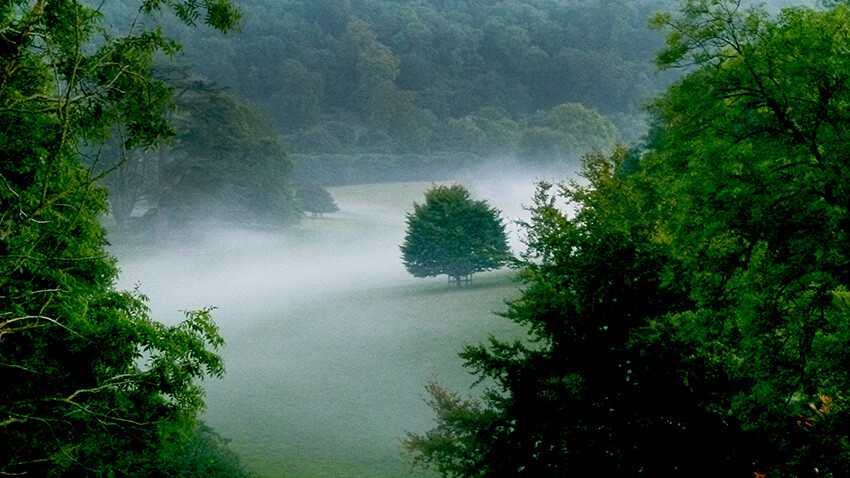
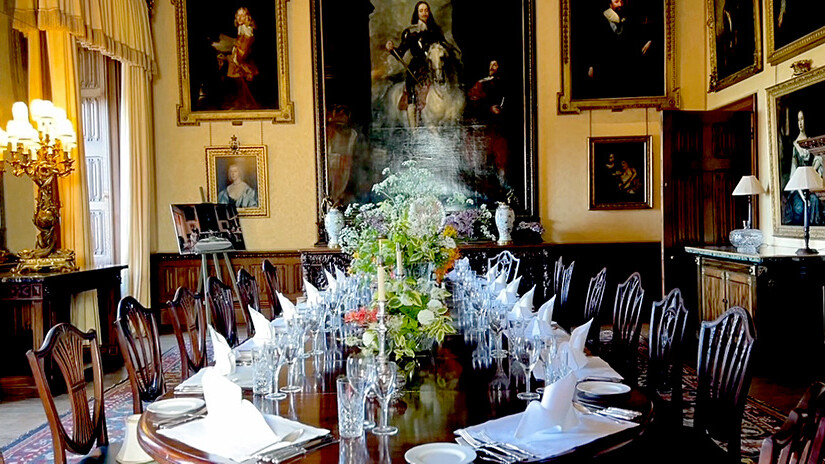
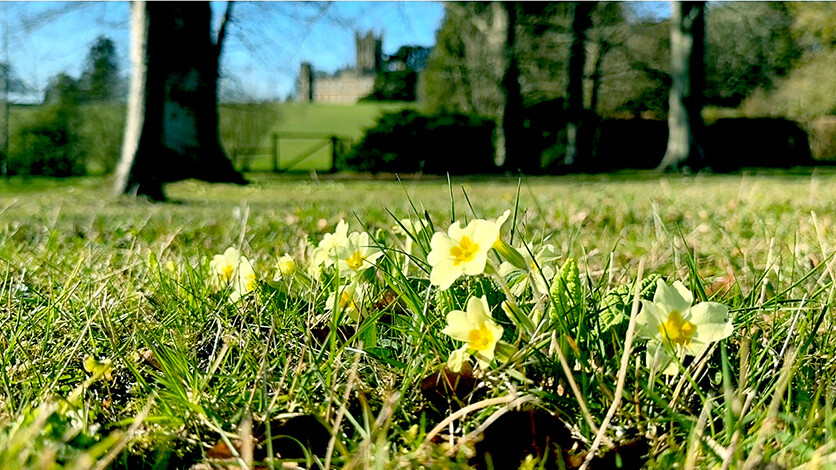
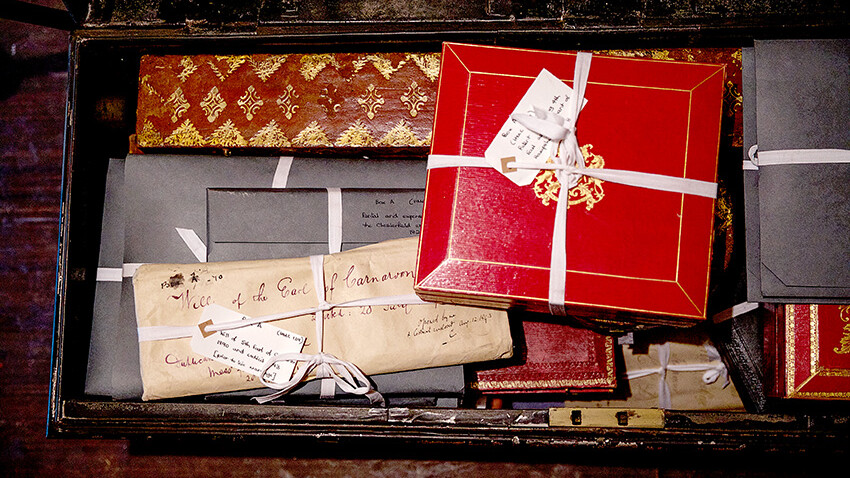
Fascinating story about the redwoods. I love the information you share. I had the privilege to visit Highclere in 2016 and it was a wonderful day. Thank you for sharing your home with us.